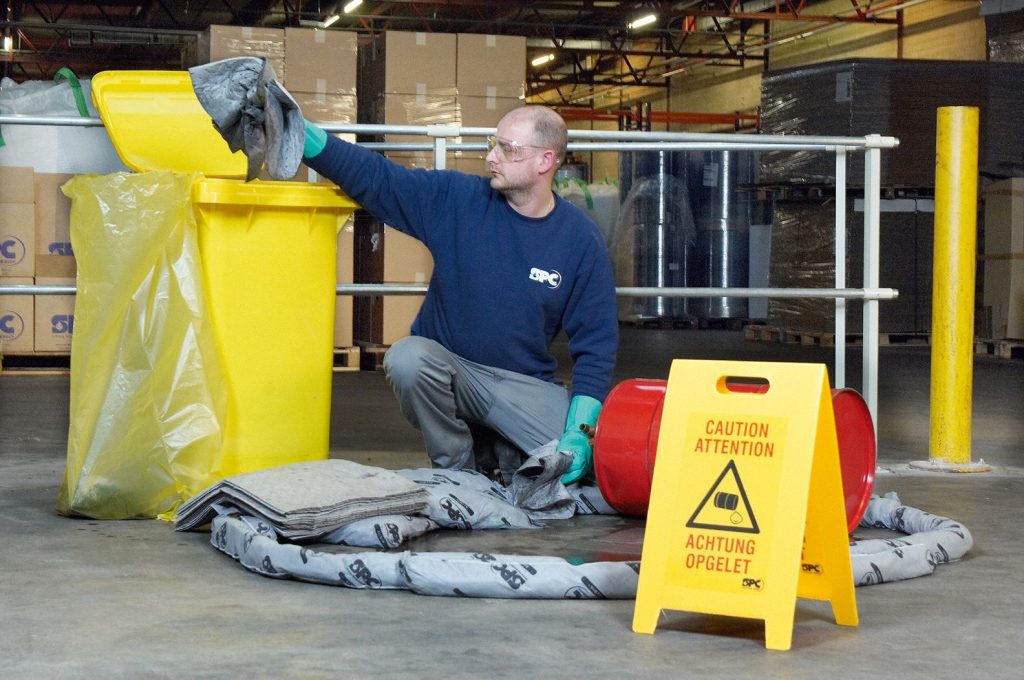Human exposure to chemicals and other hazardous substances can have effects ranging from minor skin irritation to chronic diseases like cancer. Given the risks, it’s crucial to develop a procedure of safety when handling, moving, and storing this kind of material.
Federal regulations mandate that all employees who handle hazardous materials receive the appropriate hazmat training, but that doesn’t absolve your business of the duty to create a setting that supports the safe handling of hazmat products. Appropriate spill control of substances hazardous to health regulations in Australia must be followed if you use or handle substances that could endanger human health.
That’s why every responsible business owner and manager should encourage their staff to take responsibility for establishing and preserving a safe workplace. Start by adhering to these four basic steps, which stand as the best ways to prevent a hazmat incident in your workplace.
1. Properly Store Hazardous Substances
The hazards of handling and storing substances that are harmful to both the environment and human health should be considered. Think about how a leak might affect the air, water, and nearby land, for instance. By doing this, you may be able to avoid facing charges for causing pollution.
The following are easy measures to reduce the risks posed by hazardous substances:
- Storing chemicals according to the safety data sheets manufacturer’s instructions;
- Storing incompatible substances separately while maintaining the minimal amount of hazardous substances required;
- Educating employees on how to properly store and handle hazardous substances.
Having proper spill containment equipment is another critical step in the safe removal of hazardous materials. This containment refers to the act of stopping and preventing the spread of a spill by confining water, chemicals, or other hazardous liquids within a barrier or drainage area. This could be in the form of a liquid cabinet, storage cage, galvanised drum rack, crane cage or aerosol cage. Containing a spill reduces the risk of harming or exposing people, plants, stormwater, the ground, and others to harmful materials.

2. Safely Transport Dangerous Substances
When transporting hazardous substances, there are numerous risks involved. Damage in transit, loss and theft, fire, explosion, leaks, and spills are all examples. Many goods are not dangerous in and of themselves, but they contain hazardous substances that could harm the environment, people, or both.
If you transport dangerous goods, you must follow special rules. The first step is to identify the risks and categorise your goods. You must then ensure that loads are secure, that weight is distributed evenly, and that appropriate warning signs are placed on vehicles. If you transport hazardous materials by road or rail, you must:
- Use appropriately labelled packaging so that anyone who comes into contact with it can take the necessary precautions;
- Use the appropriate vehicle, container, tank, or waggon for the goods’ classification;
- If necessary, display specific information about the goods on the vehicle or container;
- Adhere to proper procedures when loading and unloading goods.
Road vehicles are required to carry certain types of safety equipment, such as fire extinguishers. You may also require the services of a qualified dangerous goods safety adviser. All drivers must receive appropriate training, not only to drive their vehicle but also to respond in the event of an accident. Drivers must possess an ADR training certificate.
3. Dispose of Hazardous Substances
Your legal obligations do not end once you have finished carefully handling hazardous substances and taking care of spill containment as you must also ensure that they are properly disposed of or recovered afterwards. You must carefully consider the treatment and disposal or recovery process as part of your risk assessment. Your company has a legal obligation to take care of its waste.
There are additional legal requirements for waste disposal or treatment, as well as containers used for hazardous materials. You can use the information on the safety data sheet that comes with the materials or chemicals that are delivered to your site to determine if your waste is hazardous.
4. Learn About the Benefits of Safety Measurements for Your Business
The following are the business advantages of a sustainable approach to the use of hazardous substances:
Compliance with your legal obligations
Compliance reduces the possibility of costs and damage to your business. You will also avoid the possibility of prosecution or civil sanctions such as restoration and stop notices, as well as large and variable fines.
Financial advantages
Using and producing fewer hazardous materials produces less waste and cuts the waste disposal expenses of your company.
Marketing advantages
A long-term strategy can help you improve your image and boost business. Simply consuming less is one of the key principles of business sustainability. This is especially important for hazardous substances because they have a greater environmental impact than other resources.
A simple review of your business processes could help reduce your company’s environmental impact while also benefiting your bottom line. So, implementing the right material handling practices with the right tools is win-win for everyone!











